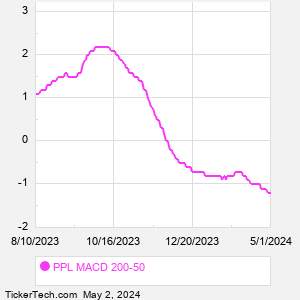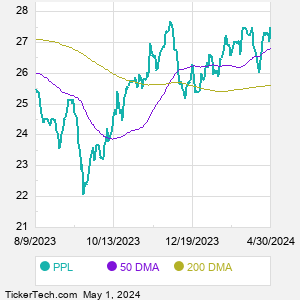PPL is a holding company. Through its subsidiaries, Co. delivers electricity to customers in Pennsylvania, Kentucky, and Virginia; delivers natural gas to customers in Kentucky; and generates electricity from power plants in Kentucky. Co.'s segments are: Kentucky Regulated, which includes the regulated electricity generation, transmission and distribution operations conducted by Co.'s subsidiaries, Louisville Gas and Electric Company (LG&E) and Kentucky Utilities Company, and LG&E's regulated distribution and sale of natural gas; and Pennsylvania Regulated, which consists of Co.'s subsidiary, PPL Electric Utilities Corporation that delivers electricity in eastern and central Pennsylvania.
When researching a stock like PPL, many investors are the most familiar with Fundamental Analysis — looking at a company's balance sheet, earnings, revenues, and what's happening in that company's underlying business. Investors who use Fundamental Analysis to identify good stocks to buy or sell can also benefit from PPL Technical Analysis to help find a good entry or exit point. Technical Analysis is blind to the fundamentals and looks only at the trading data for PPL stock — the real life supply and demand for the stock over time — and examines that data in different ways. One of those ways is to calculate a Simpe Moving Average ("SMA") by looking back a certain number of days. One of the most popular "longer look-backs" is the PPL 200 day moving average ("PPL 200 DMA"), while one of the most popular "shorter look-backs" is the PPL 50 day moving average ("PPL 50 DMA"). A chart showing both of these popular moving averages is shown on this page for PPL. Comparing two moving averages against each other can be a useful visualization tool: by calculating the difference between the PPL 200 DMA and the PPL 50 DMA, we get a moving average convergence divergence indicator ("PPL MACD"). The PPL MACD chart, in conjunction with the chart of the moving averages, basically helps in visualizing how the moving averages are showing convergence (moving closer together), or divergence (moving farther apart). |



